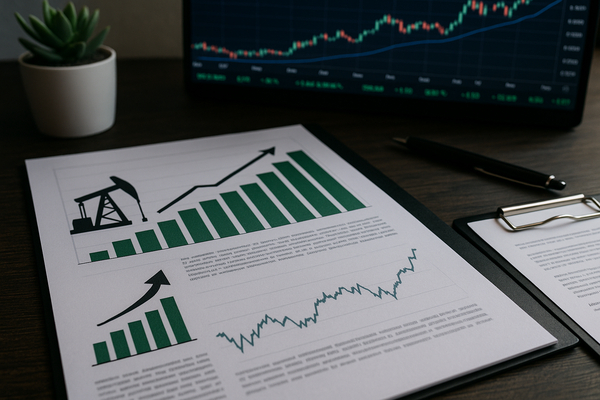
Market Pulse Check
Flows, valuations, sentiment and risk are producing a split tape this week. Institutional buyers are rotating into automation and heavy equipment names, while retail interest spikes around software and EV-related plays. Some subsectors are rewarded for clear earnings beats and margin expansion. Others face downgrades driven by stretched valuations and safety concerns. Globally, macro data and discrete operational events are reframing near-term allocations in the US, Europe and Asia.
Market Convictions — Upgrades, Downgrades and Valuation Debates
Analysts are drawing sharper lines between stocks priced for perfection and those trading at more conservative multiples. Firms reporting durable order books and margin beats saw quick upgrades. For example, industrial automation and motion-control leaders reported results that lifted price targets and prompted constructive notes from research desks. Rockwell Automation (NYSE:ROK) and Parker-Hannifin (NYSE:PH) emerged as beneficiaries of strong demand for factory automation and aerospace aftermarket services. Their Q3 beats underscored durable revenue momentum and margin leverage, prompting optimistic analyst reactions.
Conversely, names with strong narratives but rising multiples drew downgrades. AAON (NASDAQ:AAON) stands out: analysts flagged valuation stretch even as the company presented a positive growth outlook in its Q3 materials and call. The downgrade highlighted a tension investors face across the market — pay up for future growth, or protect portfolios from multiple compression if execution slips.
Across regions, earnings surprises are driving near-term flows. In the US, firms beating guidance attracted institutional inflows. In Europe and Asia, upgrades clustered around players able to convert automation investments into higher recurring revenue. Emerging markets show selective strength where infrastructure and energy projects are accelerating procurement.
Risk Events vs. Expansion — When setbacks and growth Stories Collide
Risk events are pinching parts of the market even as expansion themes push elsewhere. Safety and operational incidents at major logistics operators created immediate headline risk. The recent cargo-plane accident and FAA traffic restrictions drew attention to air-cargo resilience and short-term capacity constraints, pressuring some shipping and logistics names. United Parcel Service (NYSE:UPS) and peers faced scrutiny over network stress and legacy fleet issues.
At the same time, companies expanding into adjacent markets, launching AI-enabled products, or securing large institutional contracts see measurable upside. Automation vendors and engine manufacturers continue to secure orders tied to defense and commercial aviation. Boeing-related supply-chain activity and large aircraft orders from international carriers illustrate durable demand for fleet modernization, supporting parts suppliers and MRO service providers.
Regulatory and legal updates also reshaped risk pricing. A notable federal ruling reduced the probability of prolonged litigation for a major aircraft manufacturer, removing an overhang that had weighed on multiples. Meanwhile, job-cut headlines and private-sector layoff tallies are increasing investor focus on cost trends, which could translate into cyclical demand softness for some industrial categories.
Leadership and Fundamentals — Executive Moves, Cash Flow and Execution
Leadership changes and capital allocation decisions are mapping to market reactions. A top defense contractor named a new CFO, prompting reassessments of its financial transparency and near-term guidance cadence. Such moves often matter more to institutional holders than to retail traders because they signal governance and execution priorities.
Companies that emphasized cash-flow resilience and returned capital after strong quarters performed well. Cummins (NYSE:CMI) and Caterpillar (NYSE:CAT) benefited from robust aftermarket demand and clearer guidance, driving upgraded targets despite macro uncertainty. Meanwhile, names with aggressive M&A or high R&D burn drew mixed responses. One energy-device maker reported a large non-cash charge tied to a hydrogen/electrolyzer business, prompting analysts to rework cash-flow forecasts.
Execution gaps remain the primary divider between winners and laggards. Firms that translated backlog into sustained margin expansion outpaced peers. Those that missed on cost control or faced tariff-related inventory hits saw margin compression and cautious guidance, which proved sufficient for downgrades in several cases.
Investor Sentiment — Institutional Caution vs. Retail Momentum
Institutional desks are trimming exposure to richly valued names and redeploying into segments where earnings visibility improved. Large-cap funds favored automation, defence suppliers and certain industrial distributors after clear beats. Retail traders, by contrast, flocked to high-profile software, EV and air-mobility stories, amplifying intraday volatility.
Options activity has flagged speculative interest in several mid-cap industrials, suggesting retail-driven gamma flows could magnify moves around earnings. The divergence is most visible in trading volumes and short-interest patterns: institutional flows are steadier and directional, while retail flows are episodic and momentum-driven.
Macro inputs — private payroll readings and a surge in announced job cuts — are changing the tone in fixed income and equities. Some market participants noted that private payroll measures contrasted with headline data, creating a whipsaw in Treasury yields and forcing discretionary reallocations across risk assets. The upshot: investors are prioritizing earnings clarity and cash-generation over narratives alone.
Investor Signals Ahead
The current tape favors companies that show repeatable earnings beats, strong aftermarket resilience, and prudent capital allocation. Short-term, flows will reward visible margin expansion and clear order-book readthroughs. Longer-term, leadership will likely tilt to firms that convert automation demand and defense spending into sustained cash flow and predictable returns.
Watch for three near-term signals: 1) whether upgrades outpace downgrades in automation and heavy equipment; 2) how the market prices operational risk after logistics incidents and legal rulings; and 3) any sustained rotation by institutions from high-multiple growth names into cash-flow-rich industrials. These will help determine which companies consolidate leadership and which may lag despite strong narratives.
Sources for this report include company earnings releases and call transcripts published the last 48 hours, and analyst research notes referenced within the dataset. Coverage highlights: AAON (NASDAQ:AAON), Cummins (NYSE:CMI), Parker-Hannifin (NYSE:PH), Rockwell Automation (NYSE:ROK), Boeing (NYSE:BA), United Parcel Service (NYSE:UPS), Waste Management (NYSE:WM) and Uber (NYSE:UBER).








